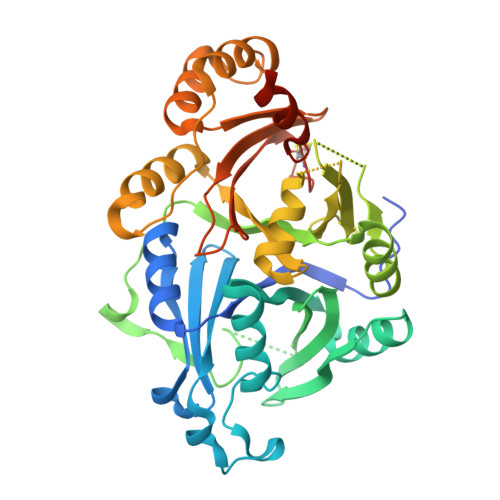Structural basis for herbicidal inhibitor selectivity revealed by comparison of crystal structures of plant and Mammalian 4-hydroxyphenylpyruvate dioxygenases
Yang, C., Pflugrath, J.W., Camper, D.L., Foster, M.L., Pernich, D.J., Walsh, T.A.(2004) Biochemistry 43: 10414-10423
- PubMed: 15301540
- DOI: https://doi.org/10.1021/bi049323o
- Primary Citation of Related Structures:
1SQD, 1SQI, 1TFZ, 1TG5 - PubMed Abstract:
A high degree of selectivity toward the target site of the pest organism is a desirable attribute for new safer agrochemicals. To assist in the design of novel herbicides, we determined the crystal structures of the herbicidal target enzyme 4-hydroxyphenylpyruvate dioxygenase (HPPD; EC 1.13.11.27) from the plant Arabidopsis thaliana with and without an herbicidal benzoylpyrazole inhibitor that potently inhibits both plant and mammalian HPPDs. We also determined the structure of a mammalian (rat) HPPD in complex with the same nonselective inhibitor. From a screening campaign of over 1000 HPPD inhibitors, six highly plant-selective inhibitors were found. One of these had remarkable (>1600-fold) selectivity toward the plant enzyme and was cocrystallized with Arabidopsis HPPD. Detailed comparisons of the plant and mammalian HPPD-ligand structures suggest a structural basis for the high degree of plant selectivity of certain HPPD inhibitors and point to design strategies to obtain potent and selective inhibitors of plant HPPD as agrochemical leads.
Organizational Affiliation:
Rigaku/MSC Inc., 9009 New Trails Drive, The Woodlands, Texas 77381, USA.
















